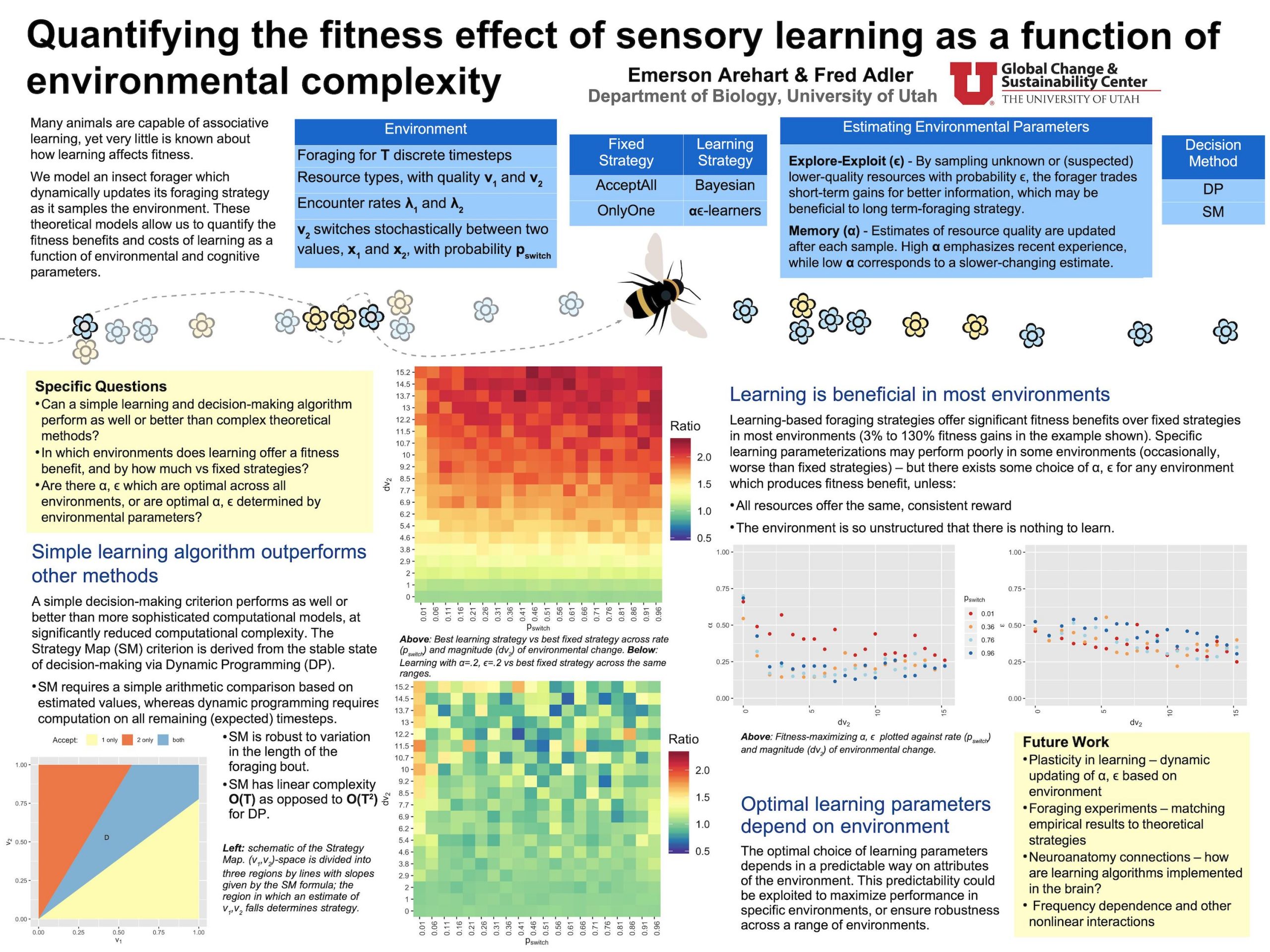Quantifying the fitness effect of sensory learning as a function of environmental complexity
-Emerson Arehart, Fred Adler
[bs_collapse id=”collapse_0da8-1024″]
[bs_citem title=”Bio” id=”citem_c94b-d81a” parent=”collapse_0da8-1024″]
I’m a PhD candidate in Biology here at the U. I specialize in mathematical biology, and use tools from math and computer science to understand the behavior of organisms. Before grad school, I was a professional beekeeper!
[/bs_citem]
[bs_citem title=”Abstract” id=”citem_289c-6944″ parent=”collapse_0da8-1024″]
Many animals are capable of associative learning, yet very little is known about how learning affects fitness. We model an insect forager which dynamically updates its foraging strategy as it samples the environment. These theoretical models allow us to quantify the fitness benefits and costs of learning as a function of environmental and cognitive parameters.
[/bs_citem]
[bs_citem title=”Narrative” id=”citem_1104-fac3″ parent=”collapse_0da8-1024″]
When animals are searching for food, sometimes it makes sense to follow a simple rule, and other times they might need to learn about the environment and change what they do. We use math to figure out when it is worth learning, and how they should learn.
[/bs_citem]
[/bs_collapse]

